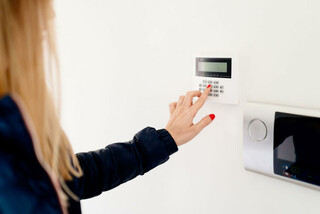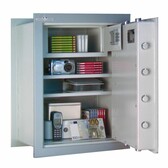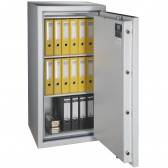According to the experience of the police, thieves usually only need a few minutes to break into a house with the use of unsophisticated tools. Therefore, it is worth putting emphasis not only on the external security of the property, but also on the protection of valuables that are inside. So we check which safe you should choose to meet the most stringent security requirements.
In the first part of this article, we dispelled some myths about burglary and outlined how criminals operate and what security measures you should put in place around your home. Let's move on to the choice of a safe, as it often determines the extent of the financial loss if a burglary does occur. According to the guidelines of the German Association of Property Damage Insurers, before buying a safe you should think about the choice of manufacturer. They should offer tried, tested and recognised products with VdS-approved certificates and ensure professional installation. A badly installed safe will not fulfil its function and will not withstand a burglary or be stolen.
What should a good safe have?
A safe should store money in cash and valuable items such as jewellery, ornaments, numismatic items and important documents. Certified burglary safes provide mechanical protection, which can be forced through with a great deal of time and effort, so that many burglary attempts are thwarted. In addition, fire-proof safes can also protect against high temperatures if a fire would break out and protect deposits against the damaging effects of fire extinguishing agents. Depending on burglary resistance, classes 0 to X are distinguished. For home safes, a resistance level of 0, I or II is usually sufficient. How do I know that a safe is VdS-certified? A label in the form of a plate can be found on the inside of the door. The capacity of the safe is also important. It should also be able to meet future needs, so you should consider what you will be storing in the safe over the years.
See also: 5 questions you need to know the answers to before buying a safe
Where should I place the safe?
It is advisable to keep the safe in a well concealed place that only the family can access. It is advisable to be discreet and not to tell anyone about your intention to buy a safe, or about ordering a safe, let alone where it will be installed. Delivery of the safe should be made in an unmarked car, and the installation team should under no circumstances unpack the safe, for example in the backyard. A good place to put the safe in the house is therefore wardrobes, alcoves and places where guests are not present (e.g. the basement). Also, do not keep cipher cards or keys to safes in your home. Even if you have a certified safe but leave the key to it in the cupboard, you can be sure that a thief will easily find it.
See the wall safes and the floor safes at HARTMANN TRESORE!
A correct safe installation
Many burglars, unable to open a safe, try to take the container with them. This happens even with models weighing up to several hundred kilograms. For this reason, containers weighing less than a tonne should be permanently anchored to the wall, furniture or floor. This type of installation can only be undertaken by professionals with written confirmation. It is also possible to prepare a place for mounting the safe in the wall or floor during the construction phase of the house. In this case, the container is completely surrounded by a concrete cover at least 10 cm thick. In addition, the property can also be equipped with an alarm with the function of silently notifying the services if there is a break-in and tampering with the opening of the safe. However, remember that even the best security features are no substitute for common sense. Therefore, use them for their intended purpose and exercise due caution.
source: recommendations and guidelines of VdS Schadenverhütung GmbH (German Association of Property Damage Insurers)
You may be interested in: How and where to install a safe at home?





